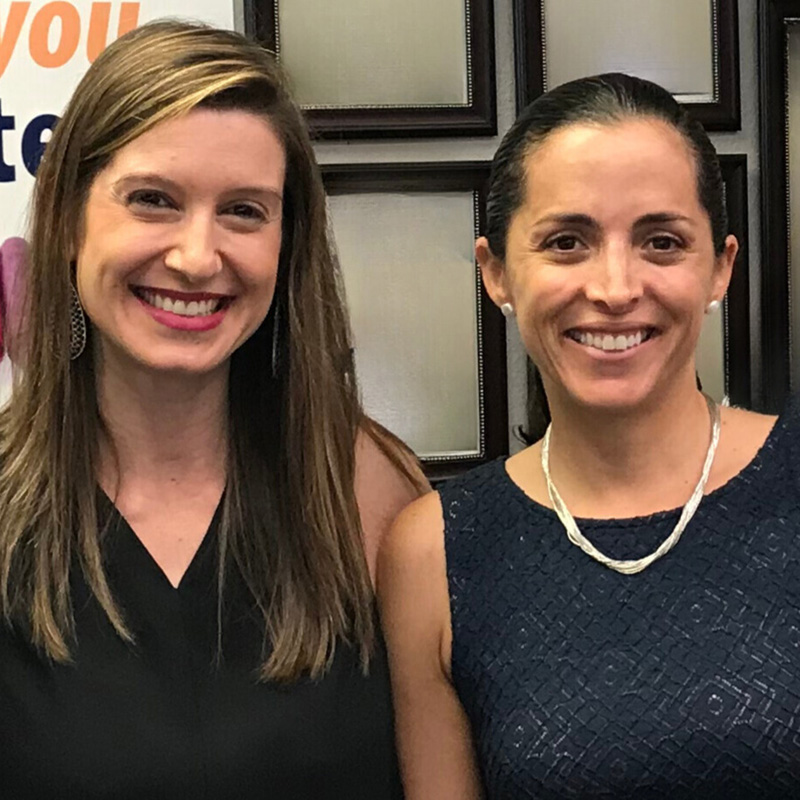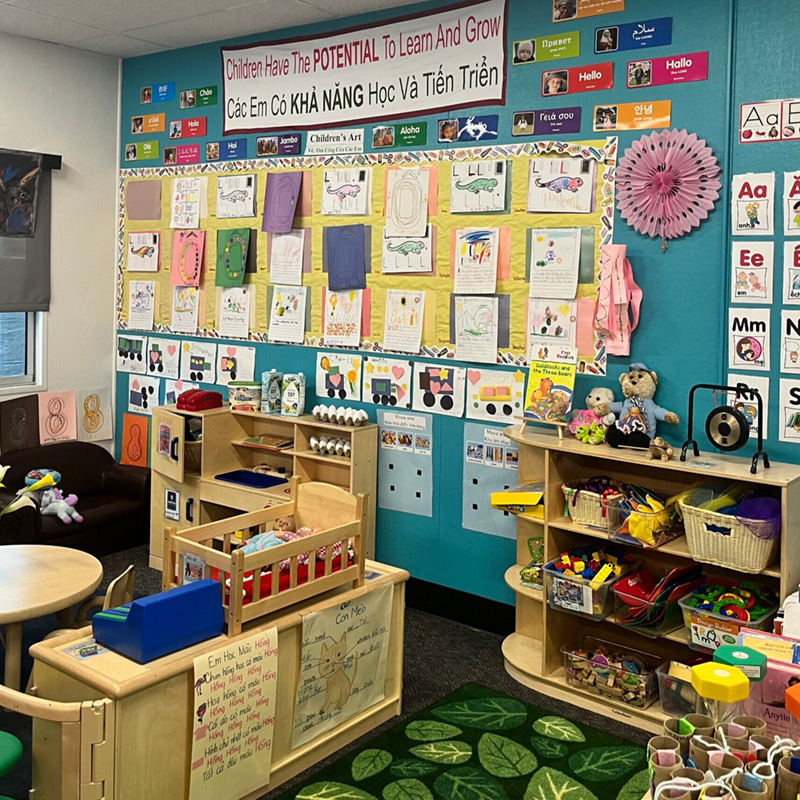When it comes to supporting brain development and language skills, California’s policies matter not just for the nearly 60% of the state’s children 0-5 who are dual language learners (DLLs), but also for early education throughout the country. Early Edge California has been a steady and strategic force for building upon the advantages inherent in speaking more than one language. Patricia Lozano and Carolyne Crolotte, the organization’s executive director and its director of DLL Programs, respectively, spoke to Early Learning Nation magazine about California’s recent progress in building supports for DLLs and the new opportunities ahead.
Lozano, an immigrant and former preschool teacher from Colombia who previously worked for UCLA’s Center for Improving Child Care Quality, stresses the importance of belonging as a key to learning and personal growth. “I always tell moms, when you go and see a preschool, you’ll have this gut feeling that this is the right place for your child because it’s warm and its teachers are welcoming.” Part of that feeling includes books, songs and lessons in the language a child hears at home.
California’s current policies are increasingly supportive of DLLs, but this wasn’t always the case. Crolotte grew up speaking Portuguese and French, and learned English in public school. “At the time,” she recalls, “California wasn’t very welcoming of bilingualism.” Indeed, the state passed an “English-only” instruction law in 1998. The measure was finally overturned in 2016, and the following year, California released its English Learner Roadmap, with the Global California 2030 report coming out soon after, declaring, “To better prepare students to succeed in the changing economy and to strengthen California’s own rich mixture of cultures and languages, California needs to vastly expand opportunities for students to learn a second and possibly even a third language.”

With research on the benefits of bilingualism becoming more widely accepted, Crolotte says, the path is clear for asset-based policies that support the youngest learners. The California Department of Education fully recognizes the science behind encouraging bilingualism in young children. In 2012, California became the first state to establish the Seal of Biliteracy, which recognizes proficiency in multiple languages.
👉 Following the Science on Bilingualism
Proclaiming, “The stroller is California’s first vehicle for upward mobility,” California’s Master Plan for Early Learning and Care, released in 2020, builds on these asset-based policies and research, and sets out research-driven goals for educating young children whose families speak languages other than English.
👉 Recommendations for Supporting DLLs in the Master Plan for Early Learning and Care
Government reports are one thing; investment is another, so it was especially significant when Governor Gavin Newsom included $5 million for training for DLLs and early childhood in 2018. Further funding aims at expanding the bilingual teacher pipeline. On October 10, Governor Newsom signed legislation expanding the DLL identification process established in state preschool in 2021; it will now be implemented in general child care programs and Migrant Child Care Programs.
“Change takes state agencies, the legislature, and of course, advocates, parents and providers,” Lozano says, “but those who are making the decisions at the funding and programmatic level are the ones who pull the levers.” She credits Deputy Superintendent Sarah Neville-Morgan and California Department of Social Services’ Dr. Maria Guadalupe “Lupe” Jaime-Mileham and Kim Johnson for showing leadership and an inclusive spirit.
👉 How Expanding Transitional Kindergarten in California Can Benefit Dual Language Learners (American Institutes for Research)
Early Edge and other advocacy groups in the state have found themselves in the somewhat unaccustomed position of realizing more of their agenda than they would have thought possible back in 2005, when they first started pushing the Preschool for All initiative. These victories, Lozano and Crolotte say, open the door to further possibilities for access and equity.
The expansion of California’s Transitional Kindergarten (TK) program makes preschool universal for 4-year-olds. Lozano sees this as a gateway for additional multilingual or dual immersion programs. Expanding bilingual programs that incorporate children’s home language, she says, provide the best support for DLLs, so they are able to reap the benefits of bilingualism and start on pathways that allow them to ultimately attain their state Seal of Biliteracy.
Unlike Texas, which has had a statewide mandate for bilingual education since 1973, California offers an uneven landscape, with some districts resisting bilingual education. “We have to figure out how to incentivize districts to support these types of programs,” Crolotte says.
👉 Read more about California’s Local Control Funding Formula (Learning Policy Institute)

Crolotte also envisions more work engaging families that speak languages other than Spanish. Los Angeles Unified School District, she says, has implemented Korean dual immersion programs, which starts in preschool and TK. First 5 LA’s “Two Languages, Twice the Opportunities” campaign, for example, promotes the benefits of bilingualism to families in Los Angeles. She adds that Westminster, which has a high population of Vietnamese speakers, not only starts early but also emphasizes culture as well as language. Asian Americans Advancing Justice helped to secure $5 million for Asian language teacher expansion. “California has so many languages,” she says, “And it’s difficult to find qualified teachers, but research and our own experience show us it really matters to celebrate and promote bilingualism.”

Mark Swartz
Mark Swartz writes about efforts to improve early care and education as well as developments in the U.S. care economy. He lives in Maryland.



